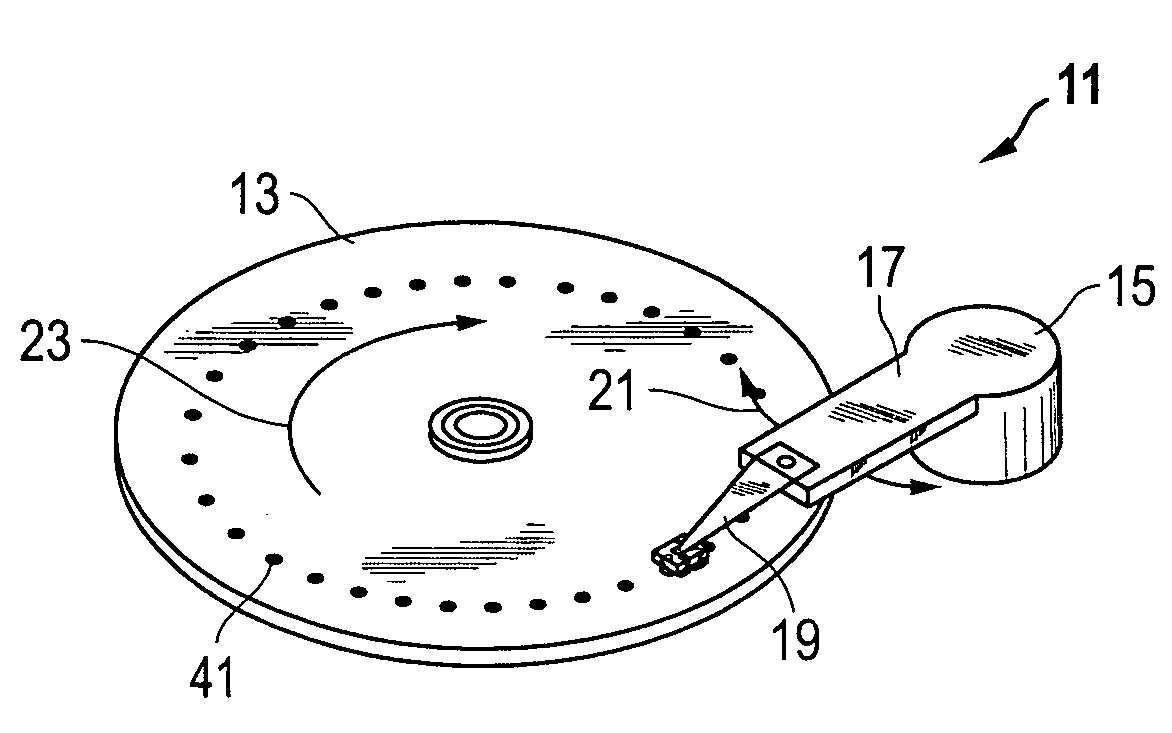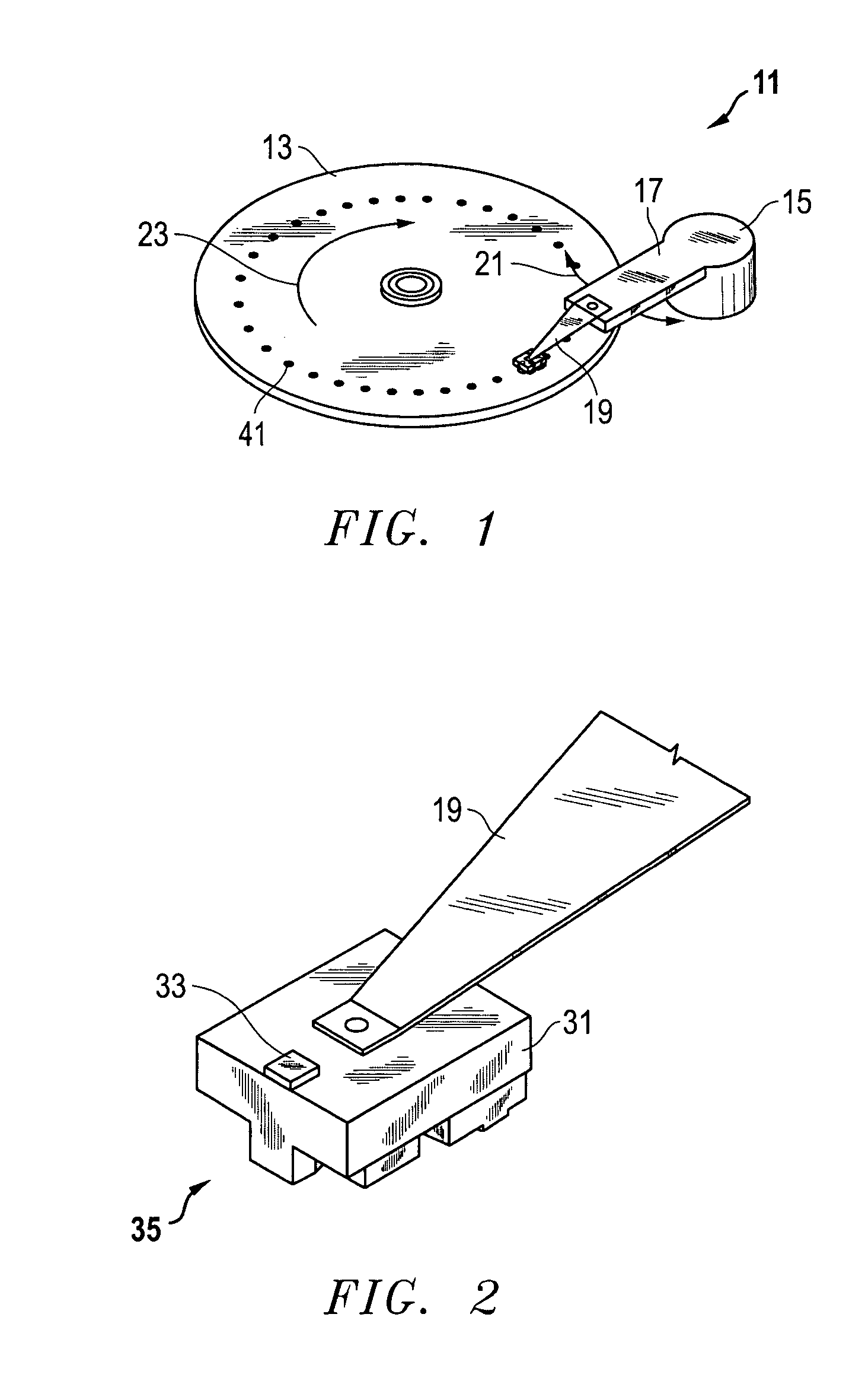System, method, and apparatus for glide head calibration with enhanced PZT channel for very low qualification glide heights
a technology of glide head and calibration method, applied in the field of glide head calibration, can solve the problem of rms signal prematurely triggering media roughness contact, and achieve the effect of improving spin down on disk media roughness
- Summary
- Abstract
- Description
- Claims
- Application Information
AI Technical Summary
Benefits of technology
Problems solved by technology
Method used
Image
Examples
Embodiment Construction
[0028]Referring to FIG. 1, one embodiment of an apparatus 11 for calibrating a glide head utilizes a rotating, magnetic disk 13 having a large plurality of tracks. The disk 13 also has a plurality of precisely formed glide bumps 41 that are used during the calibration process, as will be described below. Apparatus 11 comprises an actuator 15 with a movable arm 17 and a suspension 19 on one end. Arm 17 and disk 13 move in the directions indicated by arrows 21, 23, respectively. Arm 17 provides the seek motion when changing tracks on disk 13.
[0029]As shown in FIG. 2, a slider or flying / glide head 31 is bonded to the end of suspension 19. In the embodiment shown, glide head 31 is nano size (approximately 2050×1600×450 microns) and formed from ceramic or intermetallic materials. Glide head 31 may also be pico size (approximately 1250×1000×300 microns). Glide head 31 is pre-loaded against the surface of disk 13 (typically in the range two to ten grams) by suspension 19. It is glide head ...
PUM
| Property | Measurement | Unit |
|---|---|---|
| heights | aaaaa | aaaaa |
| height | aaaaa | aaaaa |
| heights | aaaaa | aaaaa |
Abstract
Description
Claims
Application Information
 Login to View More
Login to View More - R&D
- Intellectual Property
- Life Sciences
- Materials
- Tech Scout
- Unparalleled Data Quality
- Higher Quality Content
- 60% Fewer Hallucinations
Browse by: Latest US Patents, China's latest patents, Technical Efficacy Thesaurus, Application Domain, Technology Topic, Popular Technical Reports.
© 2025 PatSnap. All rights reserved.Legal|Privacy policy|Modern Slavery Act Transparency Statement|Sitemap|About US| Contact US: help@patsnap.com



